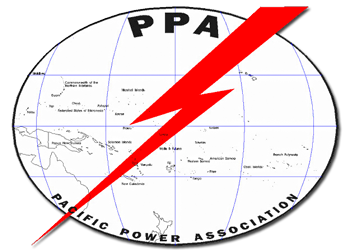Estimated 7 Million Pacific Islanders Lack Access To Electricity
NUKU‘ALOFA, Tonga (Matangi Tonga, August 03, 2016) – Only 20% of households in the Pacific Islands have access to electricity, and electricity prices in the region are among the highest in the world, the Pacific Power Association Conference in Nuku’alofa, Tonga, was reminded yesterday.
Significant investment is needed in the energy sector in the Pacific islands but so far the environment has not favoured private sector participation in energy development, said the keynote speaker, Kamleshwar Khelawan, a Senior Energy Specialist at the World Bank.
All Pacific Islands face a similar set of unique challenges in providing energy for sustainable development.
“The Pacific countries lack or have limited indigenous energy resources while the high cost of imported fossil fuels means that Pacific Islands require an increased focus on alternative sources of energy,” he said.
Kamalesh pointed out that the energy sector capacity of the Pacific Islands countries is under constant challenge for a number of reasons and the environment deterred private sector investment.
“The energy sector in the majority of PICs is characterized by weak or dated legislative and regulatory frameworks. The institutional arrangements are often ambiguous in terms of roles and responsibilities of various stakeholders, which can impact the efficiency and sustainability of investment in the sector.
“This also translates into an inherent risk of ad-hoc decision making which deters private sector investment,” he said, in noting that development of energy infrastructure across many countries in the Pacific will also require more effective laws and processes.
“About 7 million of the 9 million people in Pacific Island countries do not have access to electricity,” said Kamleshwar. “Only about 20% of households in PICs have access to electricity.”
However, this average is highly skewed by very low rates in Papua New Guinea (15%), Solomon Islands (20%), and Vanuatu (30%), which account for close to 90% of the region’s total population. PNG has a population of 2 million people and eight Pacific Island countries have populations below 200,000 people.
In terms of renewable energy resources, he said there is hydropower potential in Solomon Islands, Fiji, Samoa and PNG; geothermal potential in PNG, Vanuatu and Fiji; while solar and wind remain as the main renewable energy options. Biofuels and biomass are another potential source of renewable energy in manyPICs.
“Governments alone cannot fund the significant investment needed. A combination of government, private sector and development partners’ efforts are required.”
However, Kamalesh said that the environment has not favoured private sector participation in most of the PICs, and he pointed out there is a need for clarity.
“Clarity with respect to investment options, priorities, incentives schemes and bankable investments;
“Clarity on policy, governance, legal and regulatory and institutional frameworks eg on public private partnerships… to provide certainty.”
He said access to finance and risk management, as well as streamlined procurement and development process would also help to engender confidence.
The World Bank Group and International Finance Corporation have been involved with the development of the Tonga Energy Road Map and the Vanuatu National Energy Road Map, setting out the sector priorities and investment plans, and also involved with other energy projects in 12 countries in the region.
“Meeting the challenges of the energy sector in the Pacific Islands countries requires a joint effort by the governments, the private sector and the development partners led by the governments,” Kamaleshwar said.
The 25th Annual PPA Conference, the largest ever, is attended by about 200 delegates from across the Pacific from August 1-5.
Source: http://www.pireport.org/articles/2016/08/03/estimated-7-million-pacific-islanders-lack-access-electricity#.V6ztsXlOGEY.email
